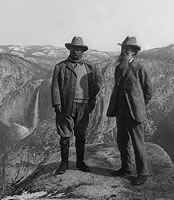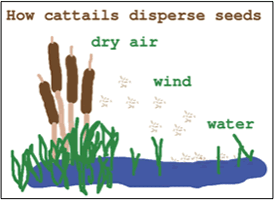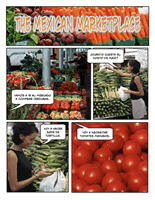 SCORE IT!
SCORE IT!
How do I get teachers to replace “copy and paste” assignments with “deep thinking” activities?
What types of assignments can I suggest that will be engaging and also address standards?
How do I persuade teachers to incorporate graphics?
Examine your assigngments and assessments.
Think about ways students can express understandings with graphics through Storytelling, Communication, Organization, Representation, Evidence, Inference, and Teaching.
Think about how the SCORE IT ideas could be reflected in a project focusing on raising chicks. Go to Chickscope for ideas. Or create your own project starting with Bugscope.
Storytelling
![]() Think about how standards support the use of graphics to imagine, invent, tell a story, entertain or display information.
Think about how standards support the use of graphics to imagine, invent, tell a story, entertain or display information.
- Read
- DigiTales: The Art of Telling Digital Storiesby Bernajean Porter
- Story Proof by Kendall Haven
- Totem Poles: Then and Now - Wikimedia Images, UofW Images, Sitka Park, Pics for Learning
- History (3-4). Knows the ways that families long ago expressed and transmitted their beliefs…
- Make your own totem pole using clipart.
- Fables - Aesop's Fables, Electronic Text, Aesops's Fables
- History (K-2). Understands the main ideas found in folktales…
- Retell fables with Make Beliefs Comics
- Autobiography and Biography - Persepolis, The Magical Life of Long Tack Sam
- Language Arts (Grades 9-12). Writes fictional, biographical, autobiographical… compositions.
- Use Comic Life to create your own. Explore the Laura Wilson example.
- Stereotypes - American Born Chinese
- Language Arts (Grades 6-8). Understands the use of stereotypes and biases in visual media.
- Stereotypes of East Asians in the US from Wikipedia
- Trace the history of stereotypes through visuals
 Try It!
Try It!
Go to Make Beliefs Comics. Brainstorm ideas for using simple 2-4 panel comics.
Communication
 Think about how standards support the use of graphics to explain, define, instruct, report, and communicate.
Think about how standards support the use of graphics to explain, define, instruct, report, and communicate.
- Self Management - BAM!: Body and Mind from CDC, Kabam Comic Creator
- Health (Grades 6-8). Knows strategies to manage stress and feelings.
- Use Photos.com (subscription service) to find images
- Students add speech bubbles to photos to communicate ideas about photos
- Heroes - myhero.com
- Language Arts (All Grades). Uses the general skills and strategies of the writing process.
- Use Wikimedia Commons for public domain images of people and places
- Nominate a hero through visuals (peacemakers, artists)
 Characters - mouseguard.net, Kevin Henkes
Characters - mouseguard.net, Kevin Henkes
- Language Arts (All Grades). Uses reading skills and strategies to understand and interpret a variety of literary texts.
- Explore the Mouse website to learn about characters and settings, then create your own.
- Communicate through character ceiling tiles
- Animal Tracks - Peterson's Field Guides, Wild Tracks by Jim Arnosky
- Explore Jim Arnosky's website
- Create a tracks guide for your state.
- US Constitution - National Constitution Center
- Square of Life - One Small Square series
- Science (Grades 3-5). Knows scientific investigations involve asking and answering questions…
- Join the Collaborative Project
- Use Kidspiration for the comparison
- Use Google Earth to explore other places in the world
 Try It!
Try It!
Go to Wikimedia Commons and search for images of famous people or places that could be integrated into projects.
Organization
Think about how standards support the use of graphics to illustrate, navigate, map, chart, diagram, categorize, and classify.
- Cycles
- Science (All Grades). Understands the structure and function of cells and organisms.
- Interpret illustrations with cycles and create your own.
- Show relationships, cycles, and connections
- Start with one image, the classify and compare others.
- Provide varied images such as Wikimedia Commons - Mitosis
- Identification Keys - What Tree Is That?, Types of Buds
- Organzing for Writing
- Language Arts (Grades 3-5). Uses prewriting strategies to plan written work.
- Use Kidspiration, Inspiration
 Try It!
Try It!
Go to MyWebInspiration and create a concept map. Brainstorm ways this online tool could be used to help young students organize information.
Representation
 Think about how standards support the use of graphics to represent, model, depict, and illustrate.
Think about how standards support the use of graphics to represent, model, depict, and illustrate.
- Chronology
- History (All Grades). Understands and knows how to analyze chronological relationships and patterns.
- Create a timeline reflecting your personal history
- Compare the history of a family member with a famous person such as Eleanor Roosevelt
- Geometry
- Math (Grades K-2). Uses a variety of strategies in the problem-solving process.
- Use the digital camera and sketches to show geometric shapes in real-life.
- Math
- Math (Grades K-2). Solves real-world problems involving addition and subtraction of whole numbers.
- Use organizers to create representations of money.
-
 Poetry
- A Poke in the I wiki
Poetry
- A Poke in the I wiki
- Language Arts (Grades 3-5). Writes narrative accounts such as poems…
- Create visual poetry
- Expository Writing
- Language Arts (Grades 9-12). Writes expository compositions.
- Use timelines to tell history on topics such as bicycles.
- Ancient Civilizations
- World History (Grades 9-12). Understands how agrarian societies spread and new states emerging in the third and second millennia BCE.
- Think about history in new ways. Example: Create a Fashion Portfolio focusing on trade and the Nile River.
 Try It!
Try It!
Brainstorm ways that digital cameras can be used to represent ideas.
Evidence
 Think about how standards support the use of graphics to document, argue, persuade, and convince.
Think about how standards support the use of graphics to document, argue, persuade, and convince.
- Media and Advertising - Don't Buy It from PBS
- Language Arts (Grades 3-5). Understands basic elements of advertising in visual media.
- Create a convincing poster.
- History
- History (Grades 5-6). Understands the migration and settlement patterns of peoples.
- Use post-it notes to organize evidence.
- Use a Support and Rejects chart to visualize results.
- It All Started...
- Language Arts (Grades 9-12). Writes persuasive compositions that address problems/solutions.
- Ask student to start with a photo. What impact did these events have on the future? For example, how did Theodore Roosevelt go from game hunter to a protector of the environment? Could it have started with a meeting with John Muir in 1903?
- Lung Disease - Images, Tobacco Ad Database
- Health (Grades 9-12). Understands the history and trends of health care.
- Use visual evidence to draw conclusions about lung disease and smoking
- Examine Tobacco Ads and watch public service announcements at YouTube: Ad Council
- Create a public service announcement incorporating visual elements.
 Try It!
Try It!
Go to YouTube: Ad Council and brainstorm ideas for a Public Service Announcement activity.
Inference
 Think about how standards support the use of graphics to plan, predict, forecast, influence and infer.
Think about how standards support the use of graphics to plan, predict, forecast, influence and infer.
- Plants and Seeds
- Science (All Grades). Understands relationships among organisms and their physical environment.
- Examine photographs, make inferences, and show conclusions. Use tools such as TuxPaint show conclusions.
- Art in Literature - Chasing Vermeer, The Wright 3, The Calder Game by Blue Balliett
- Language Arts (Grades 3-5). Uses the general skills and strategies of the reading process.
- Explore the role of art in each book. Create an escrapbooking containing book connections and critiques of the artwork.

- Float or Sink - Who Sank the Boat? by Pamela Allen, Nick Jr. Sink or Float
- Math. Understands based concepts of data analysis
- Science. Learning through observation
- Conduct experiments using digital cameras and charts to show results. Draw conclusions.
- Junior CSI - Most Wanted Bugs
- Science. Knows materials may be composed of parts too small to be seen without magnification.
- Observe and take notes about microscopic creatures. Write about what I see, I think, and I conclude.
- Pandemic - Pandemic Flu from CDC
- World History (Grades 6-8). Understands patterns of crisis and recovery.
- Create a chart comparing an historical pandemic with today or tomorrow.
 Try It!
Try It!
Explore the
TuxPaint Gallery.
Brainstorm applications of TuxPaint in sharing understandings.
Teaching
 Think about how standards support the use of graphics to model, tutor, guide, review, demonstrate and present.
Think about how standards support the use of graphics to model, tutor, guide, review, demonstrate and present.
- Visual Arts
- Visual Arts (Grades 9-12). Understands and applies media techniques and processes.
- Use the digital camera to create photo tutorials showing the process of creating art such as clay pots.
- Spanish
- Foreign Language (Grades 9-12). Presents information, concepts, and ideas to an audience.
- Read Learn Spanish with Superman or other language learning comics
- Use Comic Life or Frames to create your own language comic or comic starter.
- Dance
- Movement Skills (Grades 9-12). Identifies and demonstrates movement elements and skills in dance.
- Take digital photos and create a stretching book for a specific audience such as preschoolers or the elderly
- Business Publications
- Business Education (Grades 9-12). Uses presentation and multimedia software to design, create, edit, and format presentations and publications.
- Create logos, brochures, and websites for a local non-profit organization
 Geography
Geography
- Geography (Grades 6-8). Understands the concept of region. Language Arts. Makes presentations.
- Use Google Earth to explore a region from the sky.
- Create a graphic organizer to teach others about a region.
- World History
- World History (Grades 6-8). Understands the significance of advancements in tool technology.
- Interview someone who creates tools such as a person doing knapping.
- Create an interactive museum exhibit using PowerPoint.
 Try It!
Try It!
Create a project starter using Frames from Tech4Learning.
Brainstorm ways to use Google Earth across the curriculum.
 Try It!
Try It!
Explore Mr. A's Ancient Greece wiki. Go to the SCORE IT connections to read about each element.
Learn more at SCORE IT! with Graphic Inquiry, Standards, and Deep Thinking
For a more in-depth exploration, read the graphic book Graphic Inquiry by Annette Lamb and Danny Callison available from Libraries Unlimited, 2010.

